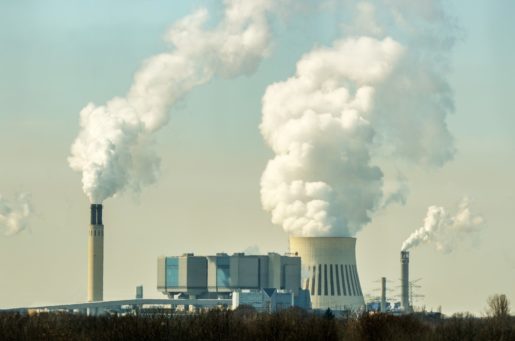Scientists are dreaming of storing captured CO2 emissions underground. Nevertheless, it can be tricky finding pockets for storing those emissions. Moreover, it is difficult to spot the low-frequency waves. Waves that would best help map the subterranean landscape because of the Earth’s seismic “hum.” Despite that fact, it might not be a challenge in the future because of Artificial Intelligence. MIT scientists already developed a machine-learning system that uses earthquakes for accurately estimating map underground structures and those low-frequency waves. According to researchers, the trick was in training.
To find the hidden correlations in components of high-frequency data from simulated earthquakes, the team trained a convolutional neural network. To put it in another way, to infer the ‘missing’ low frequencies, the artificial intelligence learned how to find patterns. Thus, in the right circumstances, the result is an algorithmic system that can estimate low rates and map the underground with more accuracy than before.
Nevertheless, yet it is not ready to use in the field. The artificial intelligence might balk if there’s a quake that falls well outside the norm and is as good as its training material. A real-world system would need to understand virtually every kind of underground content and quake. The team still needs to try this beyond a lab, despite that simulations work well.
Nevertheless, tech is up-and-coming. It might help limit humanity’s effect on the plan by locating more places to store CO2. It might also let countries avoid emissions-generating electricity altogether and help find more geothermal energy. There’s the simple matter of understanding more about Earth, for that matter. The better-equipped scientists and the more detailed the underground maps are to explain the phenomenon that might have remained questionable.
CO2 and Artificial Intelligence
Everyone knows that climate change is killing our planet. The carbon dioxide’s excess production and other greenhouse gasses fill the warming and atmosphere the Earth faster than natural processes can effectively negate them. The surface temperature has risen by 0.8 degrees C, since 1951, with no sign of slowing. Now it is the perfect timing for humans for stepping and rectifying the problem they created – by using technology for sucking excess CO2 straight from the air.

DAC (Direct Air Capture), is one of several, but still mostly theoretically, methods of sequestering and collecting atmospheric carbon currently looked at. All of these techniques seek to accomplish the same goal. There are various ways: you can pull carbon dioxide from the atmosphere and sequester it in a form that will not contribute to the global warming effects.
BECCS (bioenergy with carbon capture and storage) is the most popular researched technique today. They absorb carbon from the atmosphere as plants grow. Nevertheless, when that biomass burns in power plants for generating electricity, that carbon releases back out into the atmosphere (a net-zero effect). Bioenergy with carbon capture and storage (BECCS) is attempting to capture that carbon. It is when the biomass is burned. Afterward, they are pumping it deep underground where the greenhouse gasses will become locked in geological formations.















